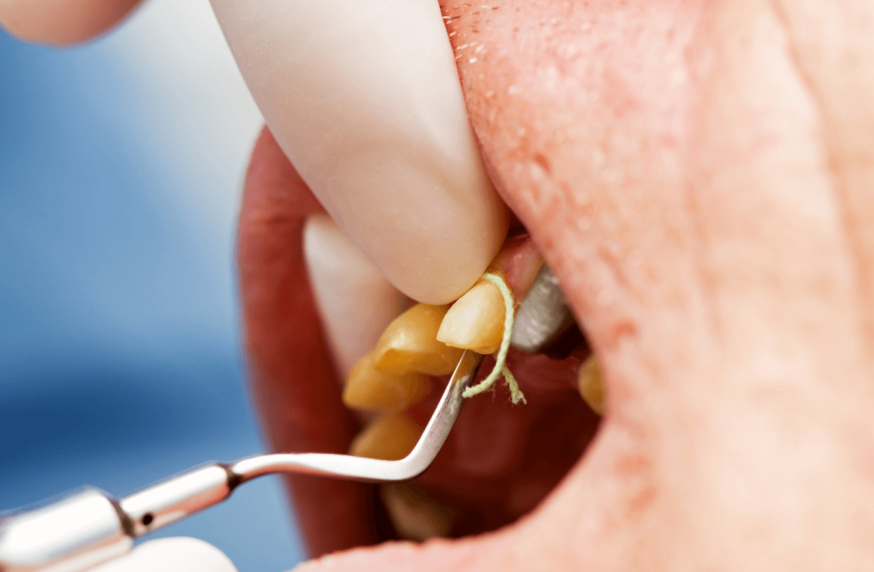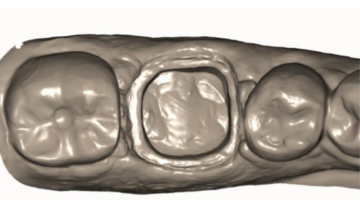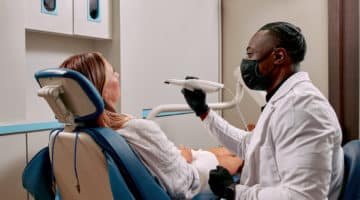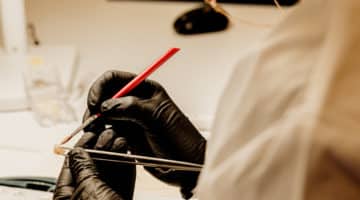The gingival retraction cord is the best way to retract for impressions for a few reasons but mainly, because it pushes the tissue away from the prepared margins of the tooth. This enables the dentist to get the best impression of the tooth since the gum isn’t in the way.
While the scientific community at large hasn’t confirmed the superiority of using one technique over another to get the ideal impression of a crown or bridge, using the retracted cord to deflect gingiva seems to be preferred by the majority of dentists. That’s probably because some techniques just work better when it comes to creating proper margins for taking digital dental impressions. In fact, we love the double cord retraction technique in particular.
Discover gingival retraction techniques to consider, their pros and cons, as well as the best gingival retraction techniques for digital dentistry.
Gingival retraction techniques
There are different techniques, some are better than others when it comes to clarity of margins, some are better than others at providing a more comfortable patient experience. Here are retraction cord dental techniques to think about as you consider the best options for your practice and your patients.
Retraction paste
What is retraction paste? Expasyl is a clay-like material type of retraction paste that can be dispensed from a syringe-apparatus or a delivered through a heavy-duty delivery gun. Other retraction pastes can be putty-like materials. This can be used for gingival displacement during the impression and cementation stages when a patient is getting ceramic veneers or crowns. It can be cleaned off after two minutes with an air/water syringe and the sulcus will be prepped for the impression.
Advantages of retraction paste
- Good for when preparation margins are at the gingival level or slightly intrasulcular prior to impressions
- Can be performed without local anesthesia
- Has no chemical or setting reaction
- Minimal or no physical damage to gingival tissues
- Doesn’t require cords
- Saves time
Disadvantages of retraction paste
- Not as effective for subgingival margins
- Results in washed margins
- Can be more expensive
- Inhibits the setting of popular definitive impressions, polyvinyl siloxane and polyether impressions
Suitability of retraction paste for digital impressions
Retraction paste can be an option for taking digital impressions as the dentist can get from final gum prep to final impression in a few minutes. That being said, it’s the farthest removed from any sense of mechanical retraction and often results in suboptimal scans so we do not promote it as a technique for digital dentistry.
Gingivectomy
What is gingivectomy? This type of retraction technique is beneficial because it can be relatively painless as the diode dental lasers are used to penetrate soft tissues minimally for the impressions. The laser is inserted into the sulcus approximately 1.0 mm apical to the restoration margin at a low power setting which can be increased as needed to effectively cut if gingival tissue is particularly fibrous. Lasers are a form of dental technology to invest in as it can be implemented in many ways.
Advantages of gingivectomy
- Produces minimal damage of collateral tissue
- Less discomfort for the patient
- Sulcus is sterilized
- The tissue shrinkage is reduces
- Requires minimal time to implement
Disadvantages of gingivectomy
- If you’re using a CO2 laser, it doesn’t provide tactile feedback so there’s an increased risk of damage to junctional epithelium
- There is a cost barrier
- Minor tissue oozing might occur
- Tougher to capture deep placed margins
Suitability of gingivectomy for digital impressions
Lasers lend themselves to being beneficial for gingival retraction and gathering digital impressions. This technique can be faster and more comfortable for the patient when done correctly and efficiently which can lead to less tissue damage while capturing the impression. That being said, the lack of mechanical traction makes it a less than ideal option for digital dentistry.
Cord retraction
What is cord retraction? Gingival cord retraction techniques involve a piece of thin string that gets placed in between the crown-prepped tooth and the surrounding gums. A retraction cord can sometimes can be packed beneath the margin of the prepped tooth, or, it is packed at nearly the same level as the margin. The depth usually depends on the patient’s gums on a case-by-case basis. The gingival retraction cord technique can be done with a single cord or a double retraction cord.
Advantages of cord retraction
- Double cord retraction results in increased accessibility and placement of the tissue
- Single cord technique is adequate if the margin is visible
- We believe it is the best way to take impressions with a digital scanner
Disadvantages of cord retraction
- Can lead to gingival bleeding and root sensitivity in some patients
- Can be relatively time-consuming procedure
- Leaving the gingival retraction cord in for a long time may cause damage to the gingiva
Suitability of double cord retraction for digital impressions
This impression technique is optimal for digital scans, particularly when the dentist uses the shoulder style margin prep for its visibility.
Gingival retraction techniques for digital dentistry
When it comes to preparing your practice for digital dentistry, the traditional techniques for retraction may be less important while intraoral scanners continue to add to their accuracy and ability to capture soft tissue. Going digital can impact the way you prepare for different prosthesis, but in the end can lead to more accurate restorations that require fewer adjustments. If your practice is ready to go digital or still has more questions, get in touch with our team today!



